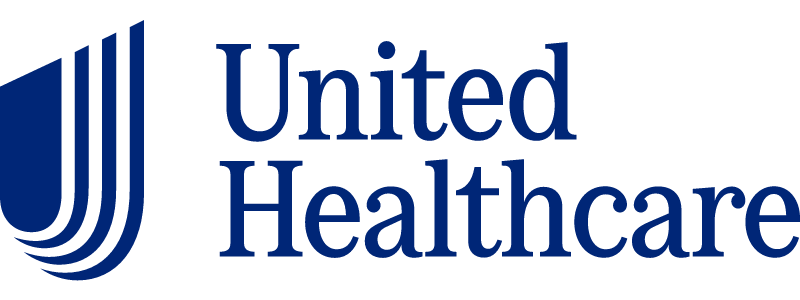Table of Contents
Over recent years, there have been increased calls for transparency in the teen behavioral health industry, citing allegations of abuse, neglect, and harsh punishments [1].
Families should look for treatment programs that emphasize transparency: regular open communication, family involvement, clear expectations, and building informed trust between treatment providers and families.
Read on to understand the importance of transparency in recovery programs for teens, how it improves quality of care and treatment outcomes, and what it looks like in practice.
What Are Teen Recovery Programs?
Teen recovery programs are specialized treatment services for youth, usually aged 13 to 17, designed to treat addiction and mental illness in teens. They typically provide evidence-based therapy, medication management, and peer support tailored to the unique developmental needs of teens.
There are many kinds of recovery programs. Some treat substance abuse disorders, mental health disorders, or co-occurring challenges, and provide around-the-clock inpatient care or flexible outpatient therapy.
No matter the program, the concept of transparency, such as open and honest communication and a commitment to following ethical guidelines and evidence-based care practices, is important.
However, inpatient recovery programs such as residential treatment centers, drug rehabs, therapeutic boarding schools, sleepaway wilderness camps, and overnight religious academies may want to place a stronger emphasis on transparency since teens will be staying at the facility full-time.
What Role Does Transparency Play in Teen Recovery Programs?
Transparency plays an essential role in addiction recovery at both the individual/patient and provider/organizational levels, fostering trust, honest conversations, and accountability.
From a provider side, transparency and open conversations with teens and their parents around risks, benefits, and costs of treatment can build more confidence and receptiveness to care. This is especially helpful for reducing feelings of powerlessness, anxiety, or confusion in teens who come from high-risk homes, trauma situations, or are skeptical of treatment [2].
How Does Transparency Improve Treatment Outcomes?
Research from Tufts University and the National Committee for Quality Assurance outlined in the early to mid-2000s how transparency was a major contributor for improving care quality while potentially reducing costs.
It estimated that it could save billions annually by lowering readmissions and healthcare complications. However, it cautioned that transparency alone may not directly improve care but instead works alongside other organizational processes (e.g., evidence-based treatment, accreditation) [3].
Another way transparency drives better treatment outcomes is through family involvement and two-way communication between providers and parents/caregivers. Recovery programs that offer family therapy, family educational classes, sessions, or workshops are often a green flag [4]:
- Family therapy and involvement can increase treatment retention by up to 50% and reduce relapse rates by 25-30%.
- Family therapy and involvement have also shown better long-term outcomes for teens than residential treatment alone, with a higher decrease in substance use after exiting inpatient treatment.
- Family therapy and home-based interventions can be cost-effective and can reduce the need for repeated treatment or hospitalizations.
What Does Transparency Look Like in Practice for Teen Addiction Treatment Programs?
Any teen recovery program can say they are “100% transparent,” but whether that is true comes down to their practices and protocols.
The concept of transparency, as laid out in SAMHSA’s Trauma-Informed Care Model of Healthcare Organizational Practice, calls on healthcare organizations to practice honest communication among all leadership levels, from staff to executives [5].
Individual Level
At an individual level (between providers and parents/teens), recovery programs that practice transparency should:
- Clearly communicate their treatment philosophy, methods, and outcomes with both teens and families from the start.
- Provide information related to program structure, qualifications of staff, and facility rules.
- Discuss all costs upfront, such as insurance coverage, scholarships, and payment plans. There should be no hidden fees.
- Provide regular updates on the teens’ progress, including any challenges encountered or recent changes to treatment plans (e.g., fighting with peers, working on anger-coping skills).
- When relevant, involve families in key decisions made, such as changes in levels of care, medication changes, or adjustments.
- Create a two-way dialogue with teens and parents to discuss concerns honestly and respectfully.
- Balance openness and parental rights to information with teens’ privacy rights and confidentiality laws.
Organizational Level
Organizations, including leadership and stakeholders, should explain what they are doing, why they are doing it, and set clear expectations. Practicing transparency involves [5]:
- Demonstrating investment in measuring the quality and outcomes of care.
- Providing ongoing education, training, and support to staff, patients, their families, and local community members on substance abuse and mental health.
- Forming an oversight committee to regularly review their policies and procedures, and evaluate and monitor progress.
- Engaging all levels of their workforce in key decisions and the change process
Supporting Teens & Families with Transparency and Open Communication at Clearfork Academy
Clearfork Academy is a network of behavioral health facilities in Texas committed to helping teens recover from substance abuse and co-occurring mental health disorders with evidence-based treatments and a family-inclusive approach to care.
We are committed to practicing transparency at all levels of our leadership, from peer support staff to therapists and executive decision makers. Our team provides ongoing updates to parents and involves family throughout all levels of care, from inpatient residential treatment to virtual outpatient therapy.
We are LegitScript Certified, accredited by the Joint Commission, and regularly meet state and federal licensing requirements. Contact our admissions team today to find safe and effective treatment for your teen today.
Sources
[1] Krebs, C. 2021. Five Facts About the Troubled Teen Industry. American Bar Association.
[2] Gillard, S. (2018). A paradigm shift: relationships in trauma-informed mental health services. BJPsych advances, 24(5), 319–333.
[3] Institute of Medicine (US). 2010. The Healthcare Imperative: Lowering Costs and Improving Outcomes: Workshop Series Summary.
[4] Fishman, M. et al. (2021). Family involvement in treatment and recovery for substance use disorders among transition-age youth: Research bedrocks and opportunities. Journal of substance abuse treatment, 129, 108402.
[5] SAMHSA. Infographic: 6 Guiding Principles to a Trauma-informed Approach.
Austin Davis, LPC-S
Founder & CEO
Originally from the Saginaw, Eagle Mountain area, Austin Davis earned a Bachelor of Science in Pastoral Ministry from Lee University in Cleveland, TN and a Master of Arts in Counseling from The Church of God Theological Seminary. He then went on to become a Licensed Professional Counselor-Supervisor in the State of Texas. Austin’s professional history includes both local church ministry and clinical counseling. At a young age, he began serving youth at the local church in various capacities which led to clinical training and education. Austin gained a vast knowledge of mental health disorders while working in state and public mental health hospitals. This is where he was exposed to almost every type of diagnosis and carries this experience into the daily treatment.
Austin’s longtime passion is Clearfork Academy, a christ-centered residential facility focused on mental health and substance abuse. He finds joy and fulfillment working with “difficult” clients that challenge his heart and clinical skill set. It is his hope and desire that each resident that passes through Clearfork Academy will be one step closer to their created design. Austin’s greatest pleasures in life are being a husband to his wife, and a father to his growing children. He serves at his local church by playing guitar, speaking and helping with tech arts. Austin also enjoys being physically active, reading, woodworking, and music.




